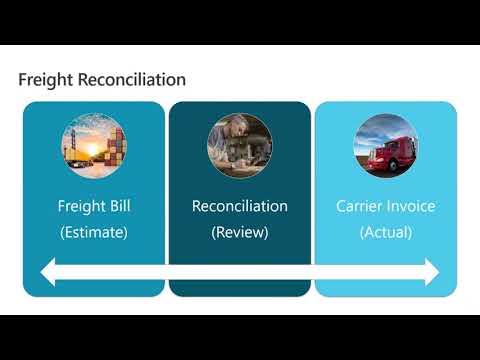Understanding Transds: The Rise of Transport Dynamics Systems
What Is Transds?
Transds, short for Transport Dynamics Systems, is a forward-thinking framework that focuses on modernizing the way goods, vehicles, and data move across cities, regions, and global networks. Unlike traditional logistics or transport methods that often operate in silos, Transds aims to create an interconnected model. It combines smart logistics, dynamic routing, energy-efficient operations, and real-time analytics into one cohesive structure.
In simple words, think of Transds as a brain for transport. It not only moves things but also thinks, adapts, and improves every step of the journey using dynamic decision-making rules.
The Philosophy Behind Transds
At its core, Transds doesn’t just aim to solve traffic problems or reduce costs. Its foundation is built on fluid adaptability. The idea is: no two routes, deliveries, or transport missions are ever the same. Conditions change rapidly—weather, roadblocks, delivery deadlines, or energy prices.
Transds was born from the recognition that static systems fail in dynamic environments. A truck shouldn’t always follow the same route. A drone shouldn’t fly on autopilot if wind patterns shift. Transds provides a way to shift, pivot, and optimize in real-time without halting operations.
Components of a Typical Transds Setup
1. Adaptive Routing Engines
One of the hallmarks of Transds is its ability to choose the best route based on live input. This might include road traffic, environmental data, vehicle condition, or package priority. The system recalculates paths on the fly and avoids inefficiencies automatically.
2. Transport-Behavior Modulators
This component deals with how the transport asset behaves—be it a vehicle, drone, or ship. It monitors acceleration, fuel usage, temperature control (for perishables), and more. If the system detects irregular patterns, it recalibrates the settings in real-time.
3. Multi-Layer Communication Hubs
Transds systems don’t operate alone. They function in networks. The communication hubs allow vehicles, stations, warehouses, and command centers to share data instantly. This ensures synchronization across the supply chain.
4. Predictive Scenario Modules
What if it rains? What if the bridge ahead closes? What if the driver’s fatigue increases? The predictive component runs endless what-if scenarios and helps the system choose the safest and most efficient route ahead of time.
Applications of Transds in Real-World Settings
Urban Logistics
City traffic is chaotic. Transds helps last-mile delivery fleets reroute instantly when traffic lights fail or streets are blocked. It can even coordinate deliveries across multiple vehicles to ensure time slots are maintained.
Cargo Shipping
In marine logistics, Transds optimizes fuel use based on ocean currents, weather forecasts, and docking schedules. It can shift shipping lanes or delay departure to avoid storm zones.
Emergency Transport
For ambulances and fire trucks, speed is life. A Transds-enabled emergency vehicle can bypass regular traffic data and instead rely on real-time aerial mapping and police inputs to carve out the fastest route.
Agriculture and Rural Mobility
Farmers using autonomous tractors can implement Transds to dynamically alter planting patterns based on soil feedback and drone surveillance. In remote areas, small vehicles can optimize fuel and trip planning for daily use.
Why Transds Is the Future
The reason Transds is gaining attention is simple: traditional transport systems are reactive, while Transds is proactive. Instead of waiting for problems to occur and then solving them, Transds anticipates disruptions and adjusts before they cause delays or costs.
This is especially crucial in a world that’s more connected, yet more volatile. Fuel shortages, weather anomalies, and digital threats can disrupt transportation instantly. With Transds, there’s built-in flexibility.
Environmental Impact of Transds Systems
Transds systems also reduce environmental damage. By reducing idling time, optimizing fuel use, and rerouting based on emissions data, these systems play a small but significant role in cutting carbon footprints.
Some models integrate with solar grids or EV charging maps to keep electric vehicles functioning optimally. This synergy between green energy and intelligent routing marks a new chapter in eco-friendly logistics.
Challenges in Implementing Transds
While the potential is high, Transds still faces barriers:
- High Initial Costs: Installation of sensors, onboard units, and software isn’t cheap.
- Data Privacy: Since vehicles share constant updates, secure networks are a must.
- Cross-Platform Integration: Different vehicle manufacturers and city systems must align protocols.
- Training: Drivers and operators need to adapt to working with machine-driven recommendations.
How Transds Differs from Standard GPS-Based Systems
Most people assume modern logistics systems already do what Transds offers. But the truth is, GPS-only systems are passive. They guide based on location but lack behavioral understanding or predictive adaptation.
Transds learns how vehicles behave, how systems interact, and how external factors influence transport. It’s the difference between a map reader and a human who senses danger and avoids it instinctively.
Industries That Will Benefit Most from Transds
- Logistics Companies – Streamlined routing, fleet management, and cost reduction.
- E-Commerce Giants – Smarter warehouse-to-doorstep deliveries.
- Smart Cities – Reduced congestion, cleaner streets, improved transport safety.
- Healthcare – Timely delivery of sensitive medical items like organs or vaccines.
- Aviation – Predictive routing for cargo planes based on weather and air traffic.
Future Trends and Development in Transds
The evolution of Transds is likely to intersect with:
- Quantum Routing Algorithms: Near-instant route solving.
- Swarm Vehicle Coordination: Fleets of autonomous delivery bots working together like bees.
- Edge Computing Integration: Less reliance on cloud, more speed on-the-ground.
- Biometric Feedback Loops: Monitoring driver fatigue or stress to assist with route changes.
Conclusion:
Transds is not just a tool or a system. It represents a living framework that evolves with its surroundings. The more it operates, the more it learns. The more it learns, the better it performs. For businesses, cities, and individuals, it’s a promise of efficiency, intelligence, and resilience in a chaotic world.






